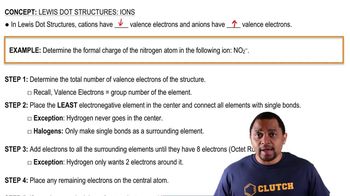A molecule with formula C4H3NO has the connectivity shown in the figure. After the Lewis structure of the molecule is completed, how many of each of the following are there in the molecule:
a. single bonds,
b. double bonds,
c. triple bonds,
d. nonbonding pairs? [Sections 8.3 and 8.5]




